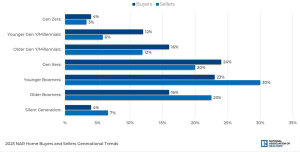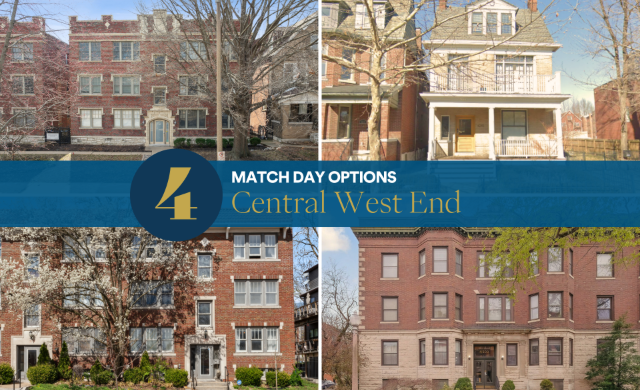Generational Shifts in Home Buying Trends
The decision to purchase a home is not just a financial transaction; it’s also a reflection of societal norms, economic conditions, and generational values. Each generation, shaped by unique historical events and cultural shifts, approaches home buying with distinct perspectives and priorities. Let’s explore how pivotal moments in history have influenced home buying trends.

GI Generation (1901-1927)
The GI Generation, also known as the Greatest Generation, came of age during the Great Depression and World War II. Their home buying decisions were often pragmatic and centered around stability. Post-war economic prosperity and government initiatives like the GI Bill made homeownership more attainable for many GIs, leading to a surge in suburbanization and the development of the American Dream.
Silent Generation (1928-1945)
Born during the aftermath of economic turmoil and coming of age in the postwar era, the Silent Generation witnessed the rise of suburban living and the idealization of homeownership. However, they also experienced economic downturns like the recession of the 1970s and oil crises, which instilled a sense of caution and thriftiness. Many opted for modest homes and prioritized financial security over extravagance. Silents were sometimes characterized as trending towards conformity, traditionalism, and caution. However they also formed the leadership of the civil rights movement and 1960 counterculture.
Baby Boomers (1946-1964)
Most baby boomers are children of either the Greatest Generation or the Silent Generation, and are often parents of Gen Xers and Millennials. The Baby Boomers grew up in a time of unprecedented economic growth and suburban expansion. They embraced the suburban lifestyle but also witnessed societal shifts like the Civil Rights Movement and the rise of feminism, influencing their attitudes towards homeownership. Boomers often sought larger homes to accommodate growing families and valued homeownership as a symbol of success and status. Frequently more individualistic that previous generations, with a “forever young” attitude.
Generation X (1965-1980)
Generation X, often dubbed the latchkey generation, came of age during economic uncertainty and cultural change. Many witnessed their parents’ struggles with mortgages and job instability, leading to a more cautious approach to homeownership. They often experience paralysis by analysis. Divorce rates reached 50% for the first time in 1979. Gen Xers were more likely to prioritize work-life balance and flexibility over homeownership, opting for smaller homes or urban living. Born at the birth of high tech, this is the last generation to know what the world was like before smart phones and the internet.
Millennials (1981-1996)
Millennials, the largest generation in history (21.6% of the U.S. population), faced unique economic challenges, including student loan debt, the 2008 financial crisis, and escalating child-care costs. Delayed marriage and child-rearing, coupled with an affinity for urban living and sustainability, shaped their home buying preferences. The 911 terrorist attack was a pivotal event for Millennials. As the first generation to grow up with the Internet, these digital natives are more inclined to prioritize location, community amenities, and eco-friendly features over square footage, driving demand for mixed-use developments and walkable neighborhoods.
Gen Z (1997-2012)
The oldest members of Gen Z are entering the housing market amidst technological advancements and societal upheavals. Growing up in the digital age, they value connectivity and convenience. Gen Zers are more likely to prioritize affordability and flexibility in housing options, with preferences for co-living spaces and renting over traditional homeownership. They seek homes equipped with smart technology and eco-friendly features, reflecting their environmental consciousness.
By The Numbers
- First-time buyers made up 26% of all home buyers, a decrease from 34% last year. Seventy percent of Younger Millennials and 46% of Older Millennials were first-time home buyers. Behind these groups, 21% of Gen Xers were also first-time home buyers.
- Baby Boomers, both Younger Boomers and Older Boomers, made up the largest generation of home buyers at 39%.
- Gen Xers had the highest household incomes of any generation at $114,300 in 2022, followed by Older Millennials with a median household income of $102,900.
- The Silent Generation had the highest share of married couples at 68%. The highest percentage of single female buyers was among Gen Z at 31%. The highest share of unmarried couples were Younger Millennials at 20%.
- 31% of all buyers had children under the age of 18 living at home. Seventy percent of Older Millennials had at least one child under the age of 18 residing in the home.
- 14% of home buyers purchased a multi-generational home to take care of and spend time with aging parents because children over the age of 18 were moving back and for cost savings. Eighteen percent of Older Boomers purchased a multi-generational home. Gen Xers comprised the second largest share at 17%.
- Gen Xers remain the most racially diverse group of buyers in 2022. Twenty-three percent of this group of buyers identified as Hispanic/Latino, Black/African American, or Asian/Pacific Islander.
In conclusion, generational differences in home buying trends are intricately linked to historical events, economic conditions, and cultural shifts. While each generation approaches homeownership with its own set of values and priorities, understanding these nuances is crucial for real estate professionals and policymakers to adapt to evolving market demands.



